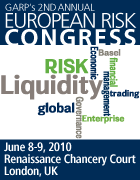Investors benefit from having access to meaningful information about the corporate governance practices of companies – including information related to risk management practices. Reflecting this, on July 10, 2009, the U.S. Securities and Exchange Commission published several proposals to amend existing corporate governance rules (S7-13-09.)
Some of the proposed amendments focus on the board’s involvement in the company's risk management processes and apply to both financial and non-financial corporations. Through various forms of disclosure, corporate boards and corporations will have to provide important information to investors about the relationship between the board and senior management relating to managing those material risks that can impact the earnings and profitability of the corporation. These proposed disclosures touch upon many aspects of the overall structure of the board's risk management function, including:
- Whether the board implements and manages its risk management function through the board as a whole or through a committee
- Whether the persons who oversee risk management report directly to the board as a whole or to a committee (and if so, which committee)
- Whether and how the board, or board committee, monitors risk
Before final adoption, the SEC has requested comments on specific areas that affect the risk governance of corporations. The first area relates to potential negative effects detailed risk management disclosures may have on the competitive and business position of individual companies. The second addresses the differences in risk management sophistication between corporations of different size. It is likely the small SEC reporting companies will be excluded from detailed disclosure. The final area relates to disseminating risk management related disclosures outside the proxy and in annual and quarterly reports to provide a wider reception and easier access to these policies and practices.
While much of the press has focused its attention on the amendments to executive compensation disclosures and on the increased proxy access afforded shareholders - both political hot button topics - there has been less attention and reporting on the impact these proposed rules could have on future corporate risk management practices (Sarah N. Lynch, SEC Plan Aims to Better Foretell Risks, July 2, 2009, The Wall Street Journal, page C3; Jeffrey McCracken and Kara Scannell, Fight Brews as Proxy Access Nears, The Wall Street Journal, page C1). If and when these proposals are enacted sometime in 2010, they will put increased focus on the importance of risk management in the evaluation of business risk, the different forms of corporate risk governance structures that exist, and the critical place of risk management at the board level.
For some time, the need for this increased focus has become evident to us from our conversations with investors, risk professionals, corporate executives, and board members. While we will remain agnostic on the need for additional regulation, we fully support the conceptual and practical importance of this information and recognize investors’ – and risk managers’ – need for it.






0 comments:
Post a Comment